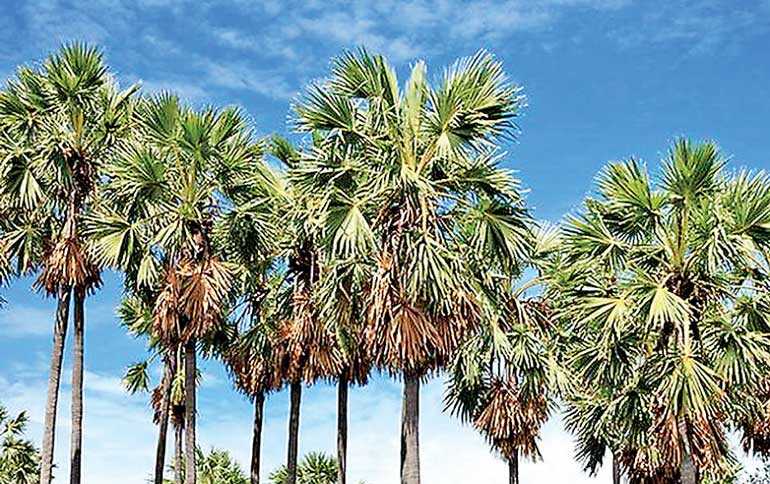Saturday Jan 04, 2025
Saturday Jan 04, 2025
Tuesday, 23 July 2019 01:12 - - {{hitsCtrl.values.hits}}

By Meera Srinivasan
The Hindu: Whether in popular culture or in niche art, the palmyrah tree has, for long, been an icon for all things north in Sri Lanka. It is often invoked as a symbol of the ‘Tamil homeland’, a witness to the community’s incessant struggle for political rights, the tragedy that befell the people during the years of war and in its gory end, and their endurance since.
After a decade and many futile attempts by the central and provincial governments to revive the war-hit economy, the palmyrah tree is standing tall, as it renews hopes of boosting livelihoods in the north and east.
With the palmyrah cooperatives taking the lead, its worker-members and marketing experts have come together to jazz up palmyrah arrack and toddy in quality and packaging, to make the drinks export-worthy. “It is the first time in some four decades that we’re exporting palmyrah arrack from northern Sri Lanka,” says M. Selvin Ireneus, a member of the Palmyrah Development Board, Jaffna.
The palmyrah tree is abundant in the north, he says, citing old government records of “about 11 million trees” in the region. While shelling and war-time destruction altered the landscape, the trees that remained have persisted. “But neither the development board nor the palmyrah research institute here has done enough to tap the economic potential of this rich natural resource in our midst,” Ireneus adds.
The current efforts to rejuvenate the sector have come as a boost to the palmyrah cooperatives. There are 41 across the Northern Province with 12,000 members, all either full-time or seasonal toddy tappers.
Set up in 1972 by then Finance Minister N.M. Perera, a Marxist politician, the move came on the heels of an anti-caste struggle in the north, in which activists, including from the Communist Party, agitated for temple entry and equal rights. “The cooperatives challenged the Vellalar caste dominance of the trade and gave control to the members, who had to be toddy tappers,” says Jaffna University Senior Lecturer Ahilan Kadirgamar.
After functioning intermittently during the war, the cooperatives are on revival mode now. According to Federation of Palmyrah Cooperatives General Manager P. Selvarajah the immediate focus is on upgrading the three distilleries and replacing old machinery to scale up production.
This is where the Government’s belated but significant budgetary allocation to the sector has come in handy. Amid mounting protests by residents of the north and east over rising household debt, often induced by predatory microfinance loans, the Ministry of Finance in 2018 allocated Rs. 1 billion for small industries and cooperatives, with an additional Rs. 40 million exclusively for palmyrah cooperatives. This year, over the Rs. 750 million allocated for the sector, the Government has pumped in another Rs. 100 million into the palmyrah industry, as per official data.
While welcoming the funds, Selvarajah points to the challenges. “What we lack is the technical knowhow to enhance production methods and quality. If the Government can help us acquire that through training, then we can put all this money to even better use.”
Hidden treasure
The palmyrah is a “hidden treasure”, says Suganthan Shanmuganathan who returned to Jaffna in 2014, after 25 years in Canada. An engineer with experience in business, Shanmuganathan, who fled Jaffna during the war, is sourcing modern bottles and labels for the cooperatives.
“If we can raise the quality of palmyrah liquor and the packaging, there is an eager export market.” His company is already exporting to Canada, France and Australia and is about to add England to the list. It is not just old arrack in a new bottle, but a host of allied products, including padaneer (the sap, considered a healthy drink), toddy, palmyrah jaggery, mats and baskets that are in line for export. However, Sevarajah, of the cooperatives’ federation, doubts if the next generation would take to climbing trees and tapping toddy – which is hard and risky labour. “Our children are studying to become doctors and engineers. But for the previous generation of tappers, this was the primary source of survival. The recent efforts have motivated our members after a long time,” he says.